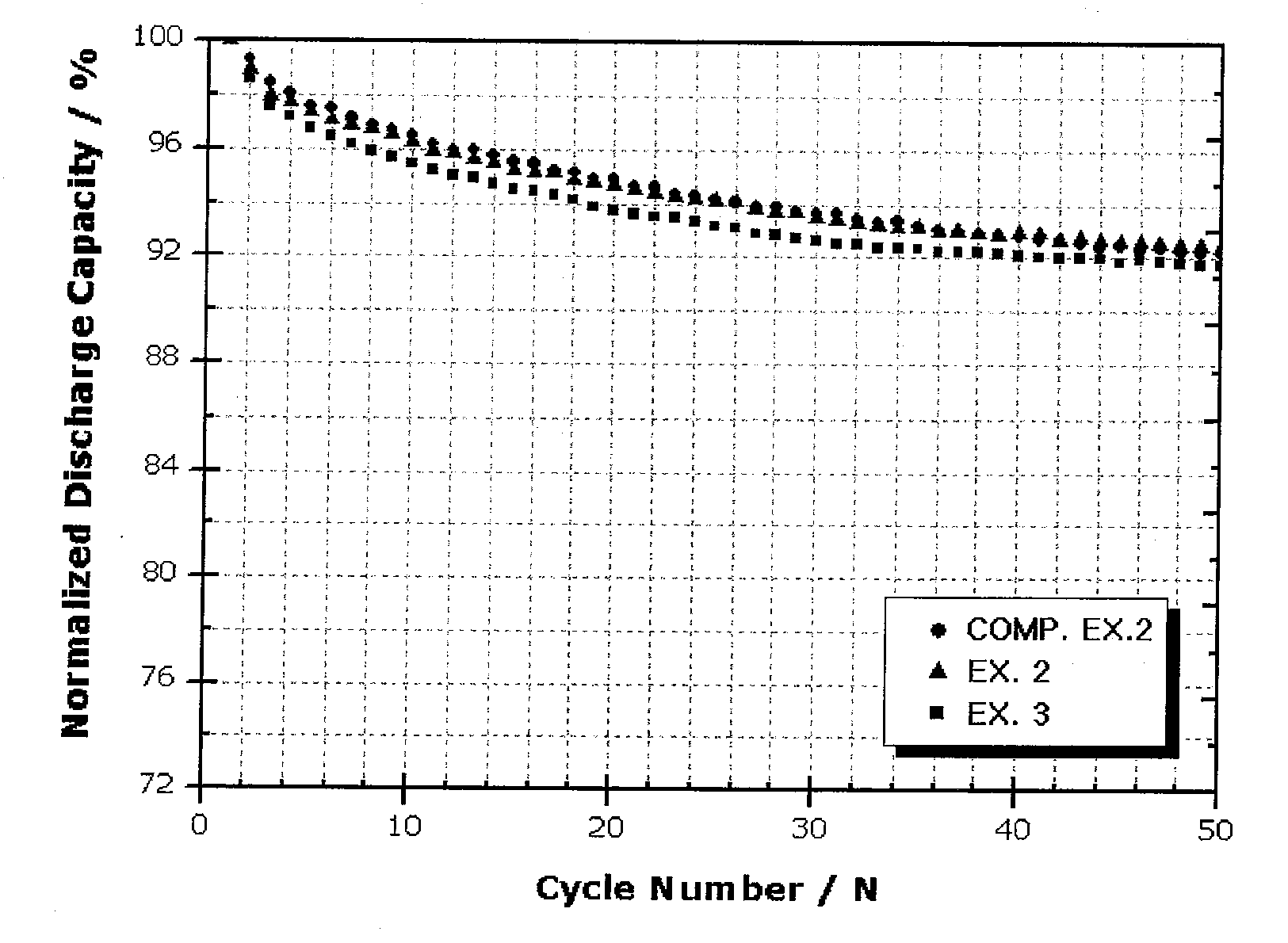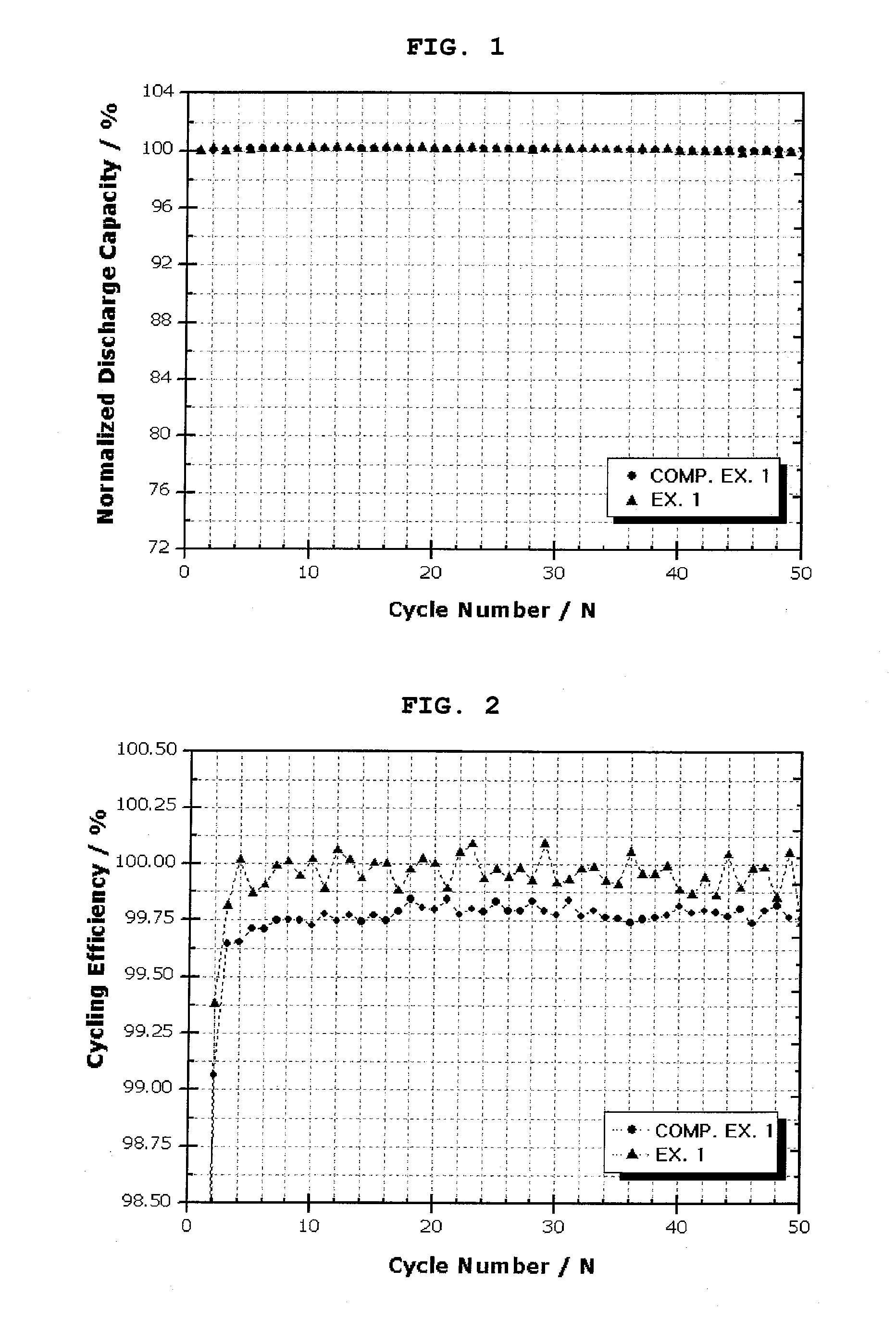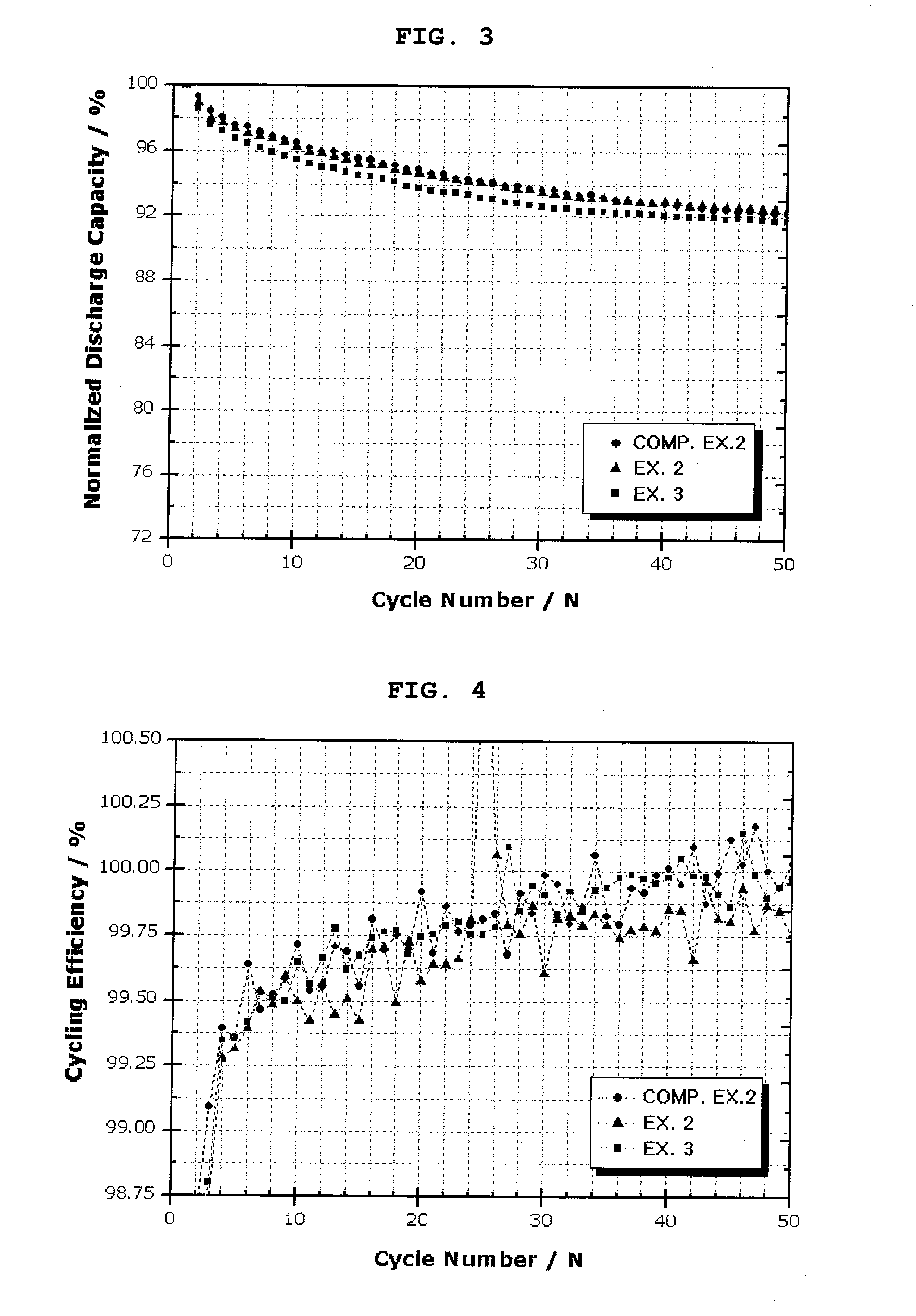Electrode active material having core-shell structure
a technology of active materials and core shells, applied in the field of electrode active materials, can solve the problems of side reactions within the battery, difficult to achieve a high capacity battery, so as to maximize the capacity of the active material of the electrode, prevent the initial capacity reduction, and achieve the effect of sufficient elasticity
- Summary
- Abstract
- Description
- Claims
- Application Information
AI Technical Summary
Benefits of technology
Problems solved by technology
Method used
Image
Examples
experimental example 1
Measurement of Glass Transition Temperature
[0069]The glass transition temperature was measured by using DSC (Differential Scanning calorimeter), which was carried out by impregnating polyethylene glycol methyl ether used in Example 1-1 with an electrolyte, and raising temperature from −100° C. to 150° C. at a rate of 5° C. per minute. Herein, as the electrolyte, the same 1M LiPF6 solution including EC / EMC (ethyl carbonate:diethyl carbonate (DEC)=1:2 in a volume ratio) as that of Example 1-3 was used.
[0070]As a result, the measured value of the glass transition temperature of polyethylene glycol methyl ether was −56° C.
experimental example 2
Test on Battery Performance
[0071]Each of the secondary batteries obtained from Example 1 and Comparative Example 1 was charged at a rate of 0.1 C up to 5 mV and charged to a current of 0.005 C at 5 mV, and then was discharged to 1V at a rate of 0.1 C, at 25° C. This charge / discharge was carried out twice. Then, charge / discharge was carried out at 0.5 C / 0.5 C in the same manner as described above, and the discharge capacity maintenance ratio and charge / discharge efficiency according to a charge / discharge cycle were measured. Table 1 and FIGS. 1 and 2 show the results.
TABLE 1Exp. 1Comp. Exp. 1Charge / discharge1st. Eff.(%)94.393efficiency50th. Eff.(%)100100
[0072]As a result, compared to the battery obtained from Comparative Example 1, which used a conventional anode active material (graphite powder), the battery obtained from Example 1, which used the core-shell structure anode active material according to the present invention, showed higher charge / discharge efficiency during an initia...
example 2
2-1. Preparation of an Electrode Active Material
[0074]0.1 parts by weight of polyethylene glycol methyl ether was dissolved in 100 parts by weight of ethyl alcohol, and a Si / graphite composite particle (diameter: 20 μm) was added to the solution in an amount of 10 parts by weight per 100 parts by weight of the solution, followed by stirring for 12 hours, Then, the mixed solution was filtered to obtain a core-shell structure Si / graphite composite electrode active material coated with polyethylene glycol methyl ether with a thickness of about 25 nm.
[0075]A core-shell structure graphite-based electrode active material was prepared in the same manner as described in Example 2-1, except that graphite powder was used, instead of the Si / graphite composite particle.
2-2. Preparation of an Electrode
[0076]The core-shell structure Si / graphite composite electrode active material obtained from Example 2-1, the core-shell structure graphite-based electrode active material, the SBR (styrene butadie...
PUM
| Property | Measurement | Unit |
|---|---|---|
| glass transition temperature | aaaaa | aaaaa |
| glass transition temperature | aaaaa | aaaaa |
| thickness | aaaaa | aaaaa |
Abstract
Description
Claims
Application Information
 Login to View More
Login to View More - R&D
- Intellectual Property
- Life Sciences
- Materials
- Tech Scout
- Unparalleled Data Quality
- Higher Quality Content
- 60% Fewer Hallucinations
Browse by: Latest US Patents, China's latest patents, Technical Efficacy Thesaurus, Application Domain, Technology Topic, Popular Technical Reports.
© 2025 PatSnap. All rights reserved.Legal|Privacy policy|Modern Slavery Act Transparency Statement|Sitemap|About US| Contact US: help@patsnap.com



